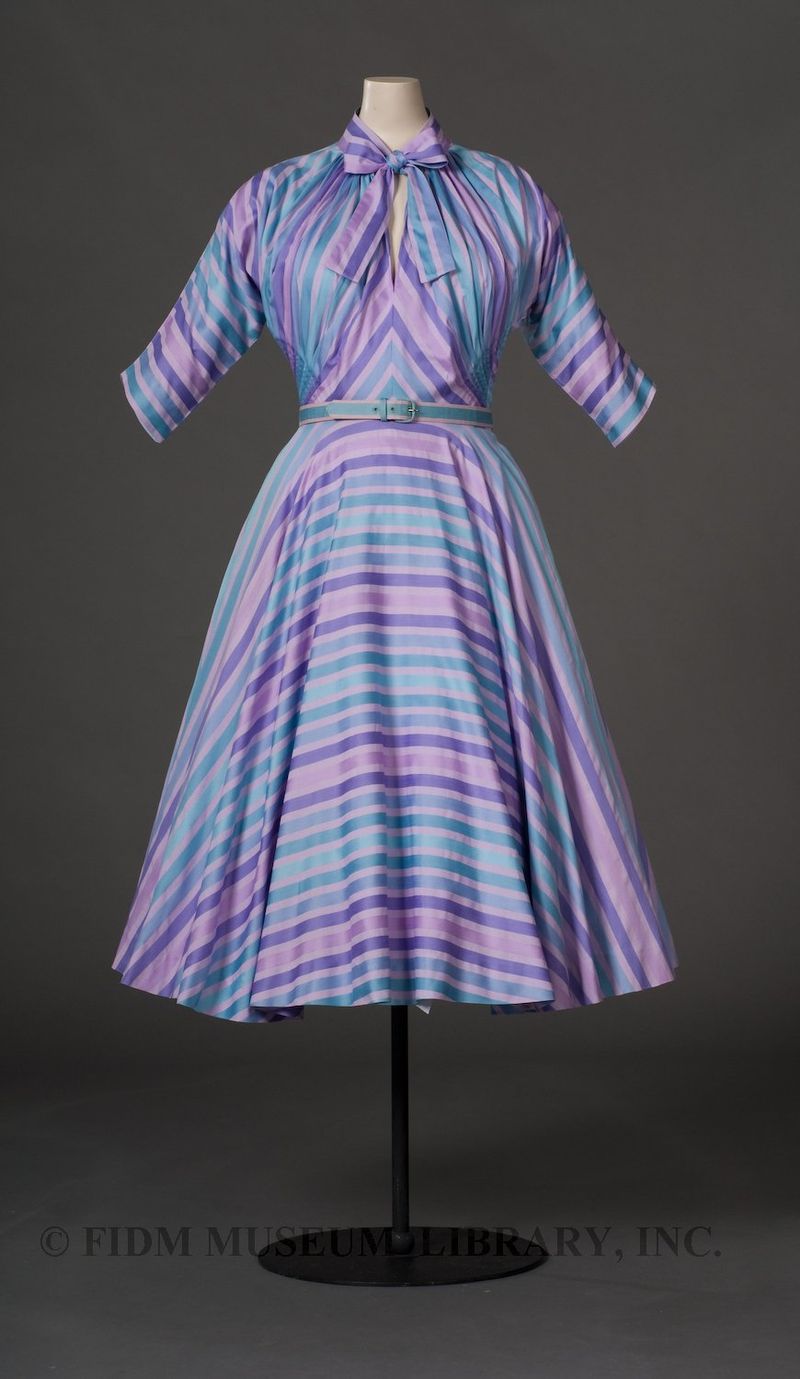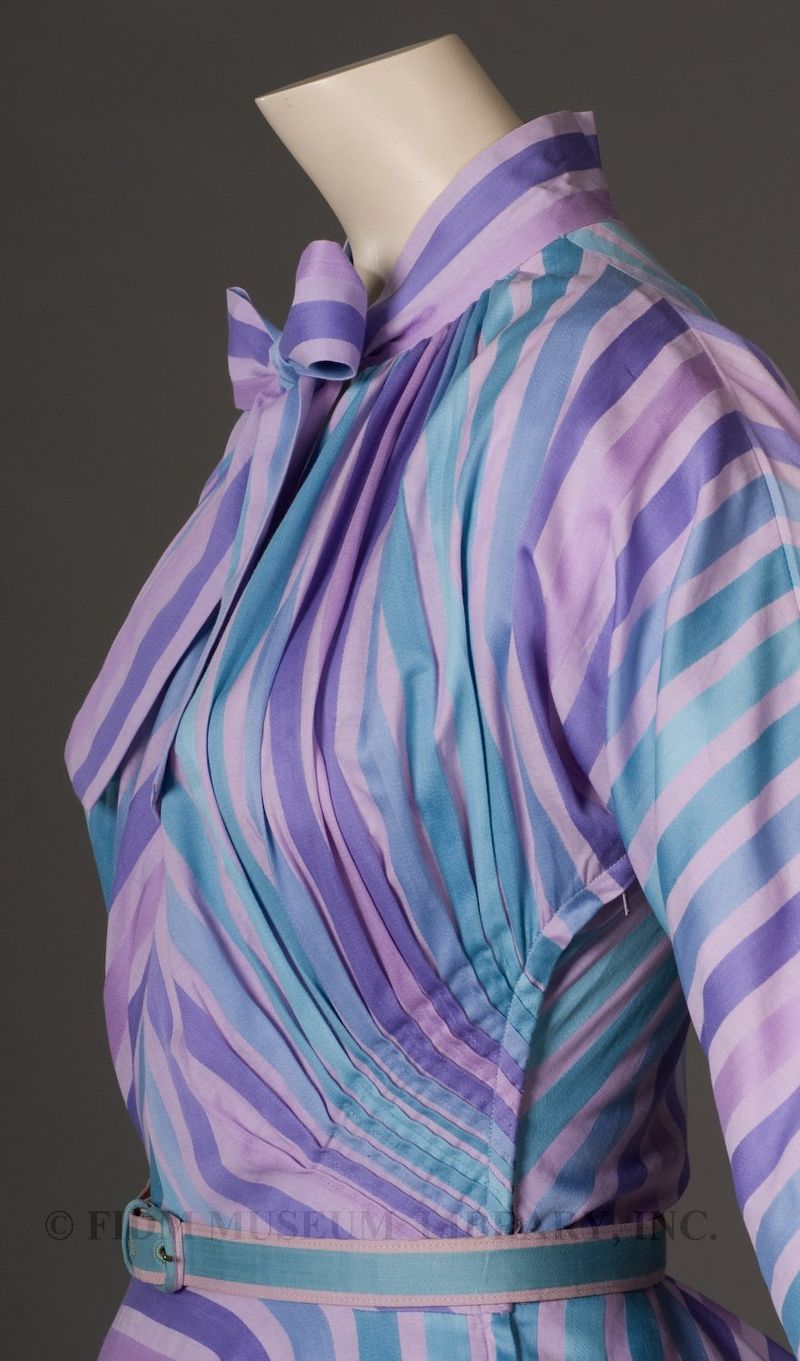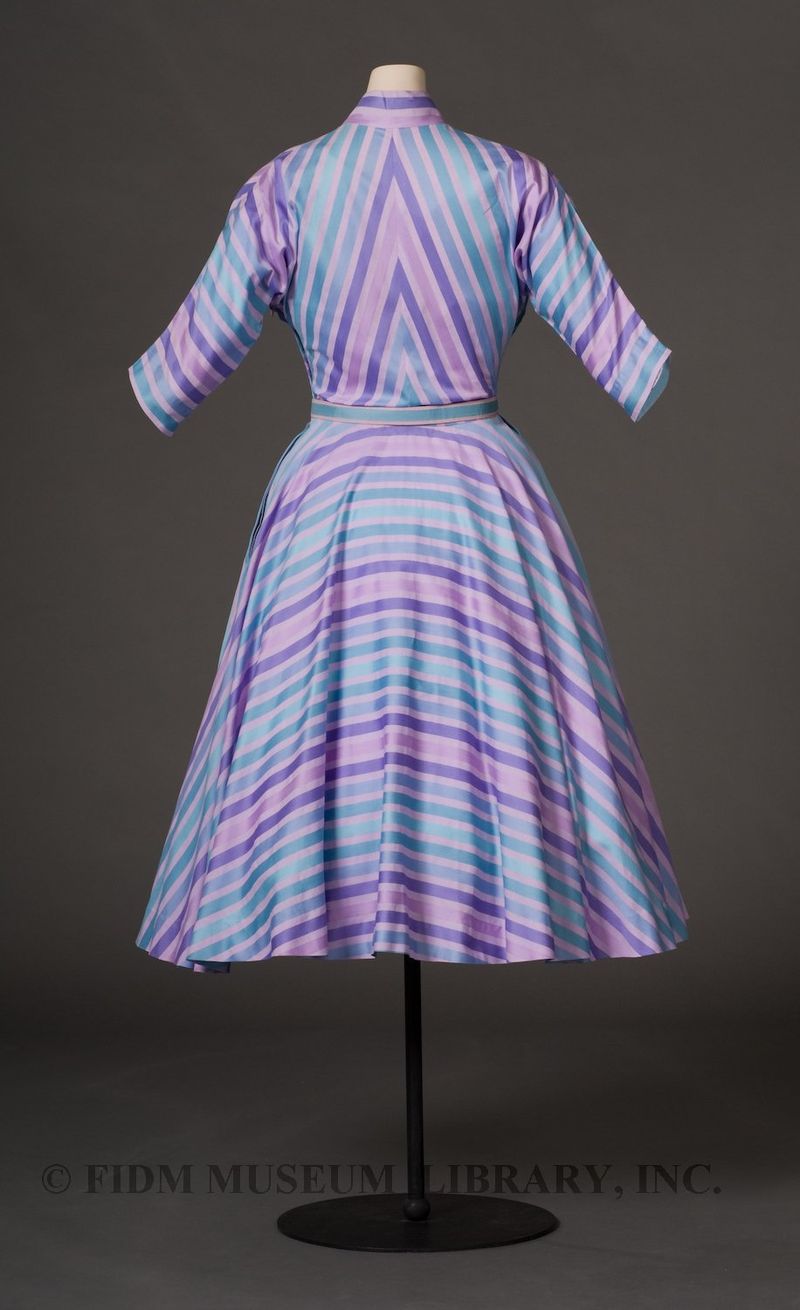Claire McCardell day dress, c. 1950
 Day dress
Day dress
Claire McCardell
c. 1950
FIDM Museum Purchase
2003.5.28AB
Claire McCardell had a way with stripes. She played with them, spinning and twisting their orientation to create dazzling visual effects. Here, lavender, aqua, purple, and blue stripes are exploited for their graphic potential. Horizontal stripes decorate the full skirt, while the mitered bodice draws the eye upward. This style of bodice, cut all-in-one on the bias, was one of the designer's favorite "McCardellisms," one of several recurrent design solutions that defined her aesthetic. Instead of darts, pintucks give the bodice its shape. In general, McCardell avoided darts, preferring to create silhouette via tucking, tying, wrapping or gathering.
The zipper placement is also a McCardellism. A Claire McCardell garment will rarely, if ever, have a back closure. Instead, McCardell placed closures at the center-front or side; many McCardell dresses were simply pulled over the head. As she observed in her 1956 book What Shall I Wear? "a woman may live alone and like it, but you may soon come to regret it if you wrench your arm trying to zip a back zipper into place."1
Rather than specializing in one aspect of a woman's wardrobe, McCardell designed for a range of situations and activities. From refined evening wear to playful swimsuits, McCardell's creations were always designed with a nod to both practicality and style. McCardell's shirtwaist dresses, often featuring smartly mitered stripes, are one testament to her ability to combine these sometimes disparate traits. As seen in the shirtwaist pictured here, McCardell used invigorating textiles and a variety of McCardellisms to enliven the popular style. Easy-to-wear, reasonably priced, and stylish, McCardell's shirtwaist dresses "sold yearly in the tens of thousands."2
1 Quoted in Yohannan, Kohle and Nancy Wolf. Claire McCardell: Redefining Modernism. Abrams Inc.: New York, 1998. 63.
2 Yohannan and Wolf 58.

